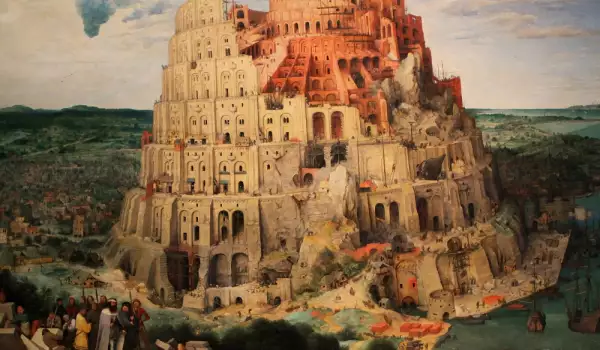The story of the Tower of Babel is told in the 1st book of the Bible - the Book of Genesis. It explains the origins of the different languages and people in the world. According to it, after the Great Flood decimated the world, the survivors of humanity all spoke one language and had one common culture.
Long after the Apocalypse, the survivors came to the land of Shinar, located in Mesopotamia between the Tigris and Euphrates rivers. It was there that the people decided to build the first city after the Great Flood. The city would be called Babylon.
In its very center, the people began constructing a massive tower, hoping to reach the sky itself. The grand project was never finished - according to the story, God confused the speech of men, making them all speak different languages so that they couldn't understand each other. As a result the builders were unable to finish the grandiose project and scattered all across the face of the Earth.
Historians claim that the saga of the Tower of Babel originated around the year 2000 BC, as legends and passed down stories of the people living at that time in Mesopotamia.
The Bible, as a written book, would appear about 1000 years later, with many of the texts of the Old Testament being myths from ancient Mesopotamia, interpreted by its authors.

This also explains the exceptionally negative description of Babylon and everything related to that civilization. The term "Whore of Babylon" first appears in the "Revelation of John the Apostle", with her name written on her forehead: "Babylon the Great, the Mother of Prostitutes and Abominations of the Earth." The Babylonians are described as enemies and everything related to their culture as sinful and antediluvian.
This is owed to the fact that ancient Judea and the Babylonian Empire were political rivals. During the reign of the greatest ruler of Babylon, Nebuchadnezzar II, Judea was destroyed and the Jews were taken to the mighty city. There, as slaves, they took part in the construction of the temples traditional to the Babylonian culture - ziggurats.
The story of the Tower of Babel is incredibly popular in the cultures of most people around the world. The plot has numerous mythological parallels. The phrases "confusion of tongues" for example can be found in many languages.









